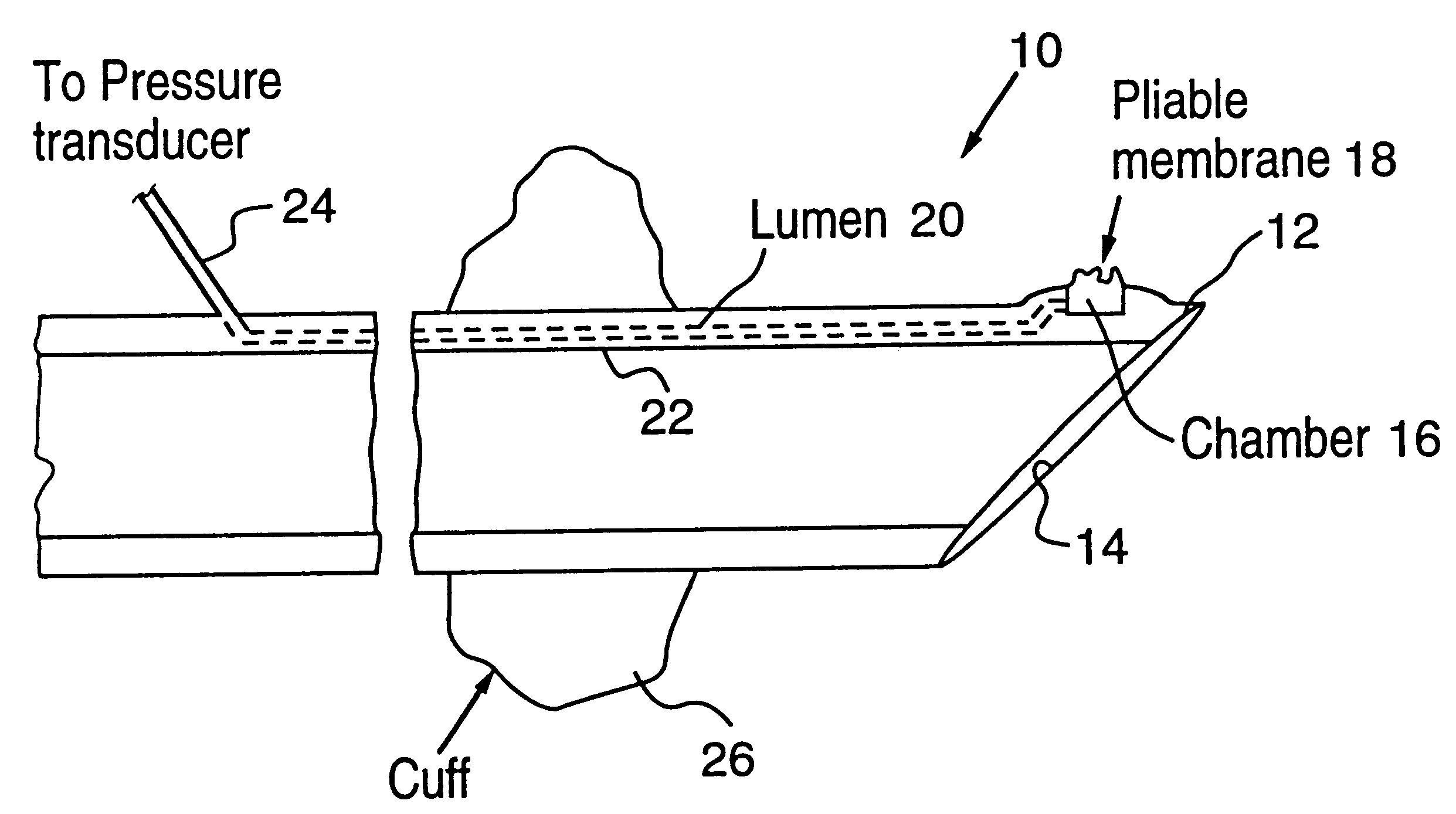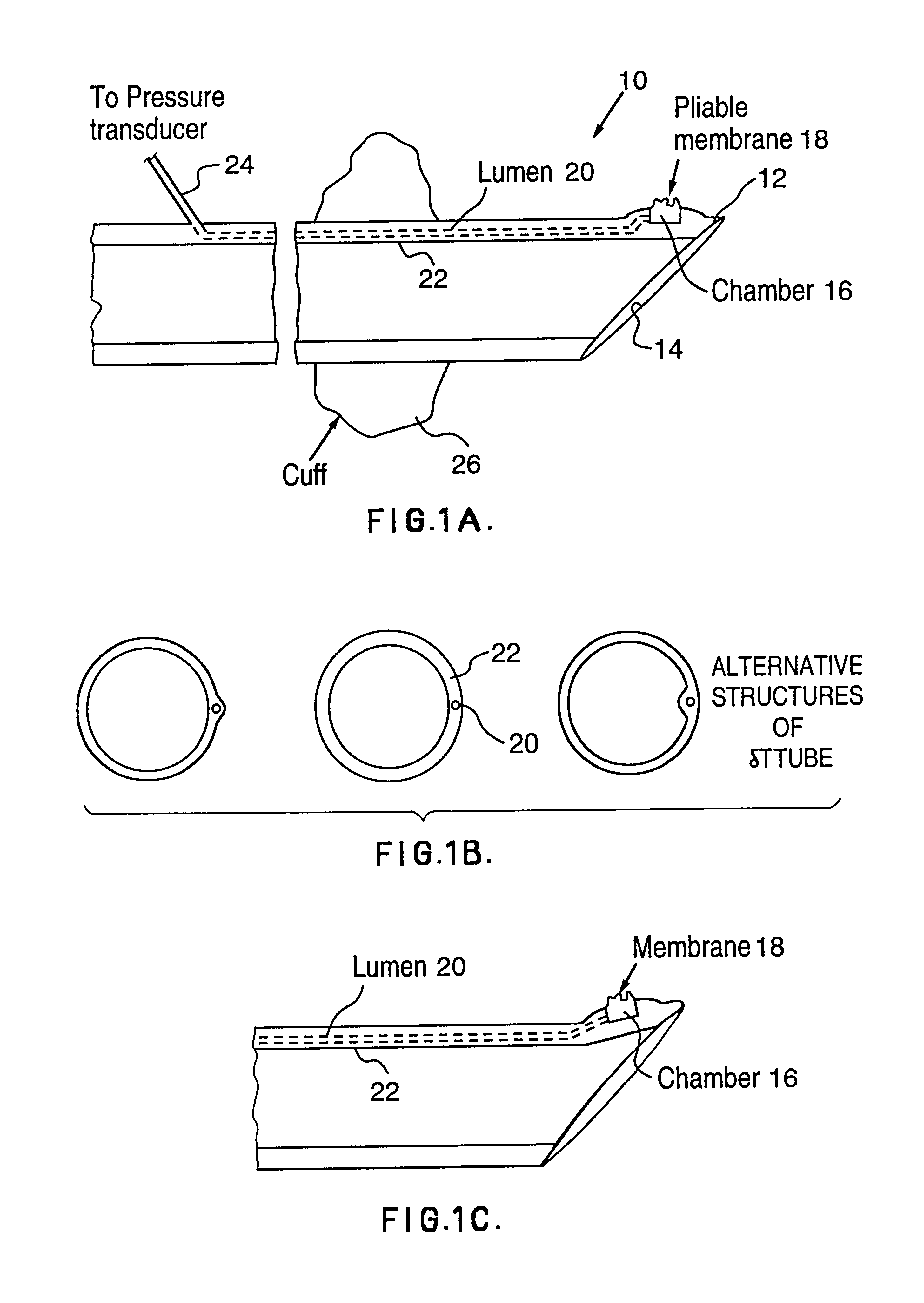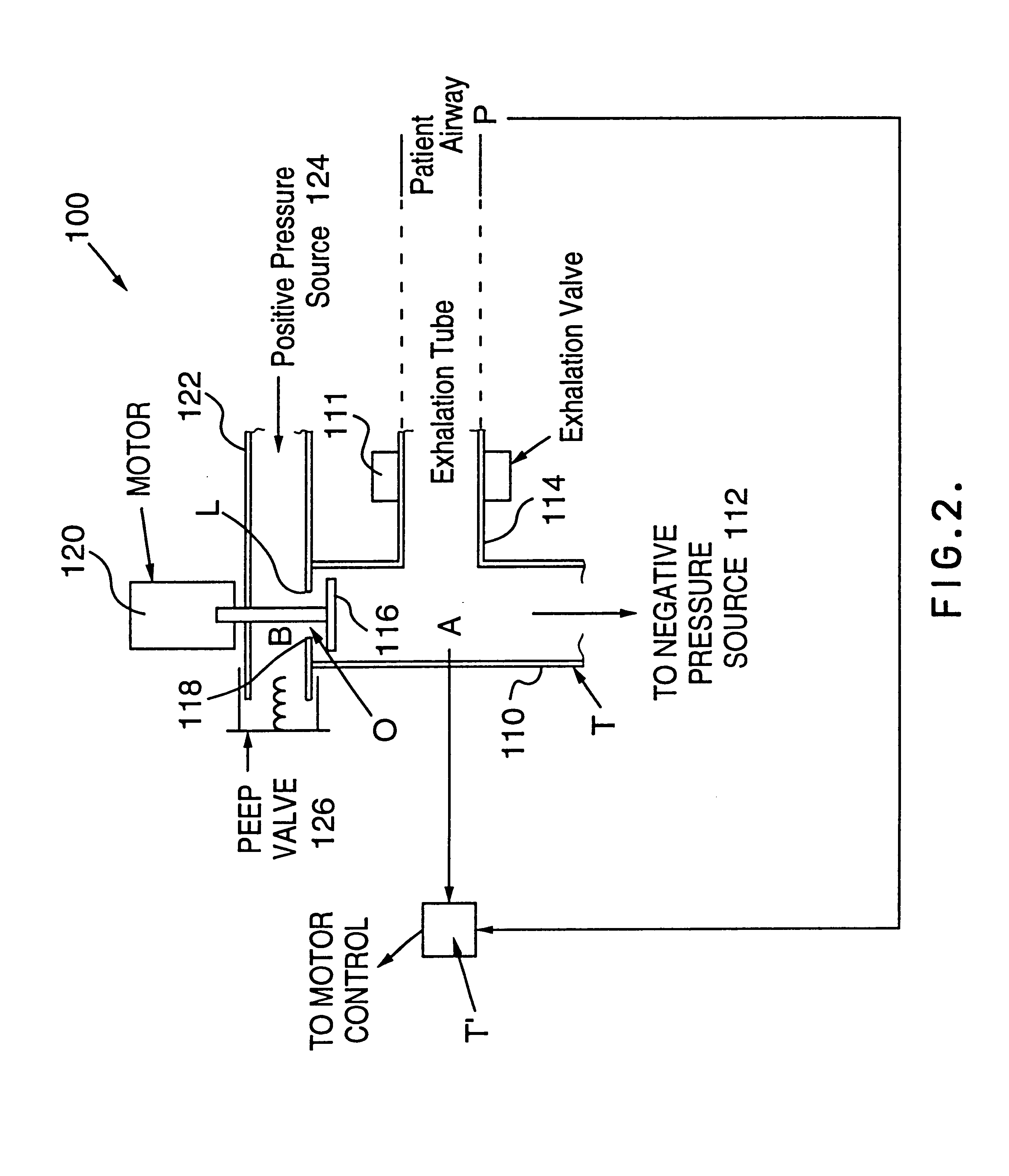Control of airway pressure during mechanical ventilation
a technology of mechanical ventilation and airway pressure, which is applied in the direction of respirator, trachea tube, life-saving device, etc., can solve the problems of pressure artifacts, catheter tip malfunction, and impression of patient resistance chang
- Summary
- Abstract
- Description
- Claims
- Application Information
AI Technical Summary
Benefits of technology
Problems solved by technology
Method used
Image
Examples
Embodiment Construction
Referring first to FIGS. 1A to 1C, an endotracheal tube 10 is constructed such that the wall thickness near the long end 12 of the slanted orifice 14 is greater than usual in order to accommodate a small chamber 16. The external wall of the chamber is made of highly pliable membrane 18 with some redundancy such that, starting from a collapsed position (membrane 18 abutting on internal wall of chamber 16) about 0.1 ml or more of air can be injected in chamber without development of significant back pressure (e.g. less than about 1 cm H.sub.2 O). A lumen 20 incorporated in the wall 22 of the tube 10, communicates with the chamber 16 and runs along the tube 10 until near the external end where it connects with an external narrow tube or catheter 24 that serves as a conduit to the pressure measuring device (transducer). Three alternate locations for the lumen 20 within the wall 22 of the ET tube are shown in FIG. 1B.
In normal use, the pliable external wall 18 of the chamber 16 normally ...
PUM
 Login to View More
Login to View More Abstract
Description
Claims
Application Information
 Login to View More
Login to View More - R&D
- Intellectual Property
- Life Sciences
- Materials
- Tech Scout
- Unparalleled Data Quality
- Higher Quality Content
- 60% Fewer Hallucinations
Browse by: Latest US Patents, China's latest patents, Technical Efficacy Thesaurus, Application Domain, Technology Topic, Popular Technical Reports.
© 2025 PatSnap. All rights reserved.Legal|Privacy policy|Modern Slavery Act Transparency Statement|Sitemap|About US| Contact US: help@patsnap.com



